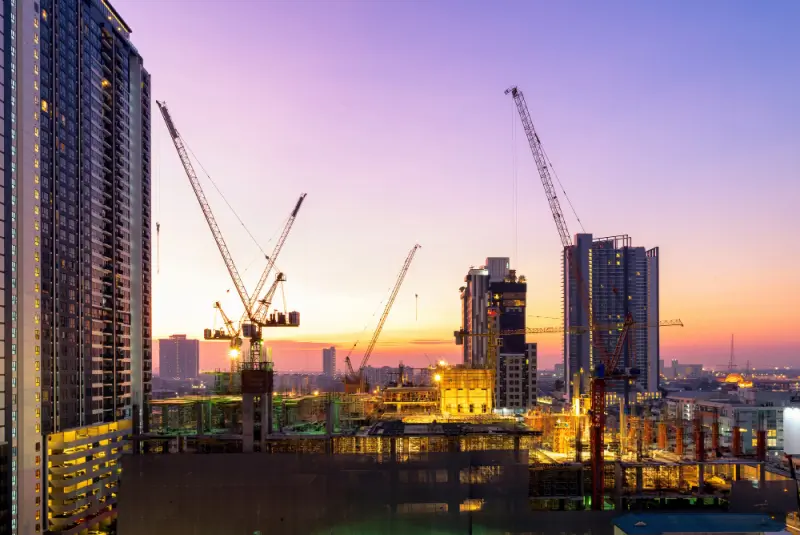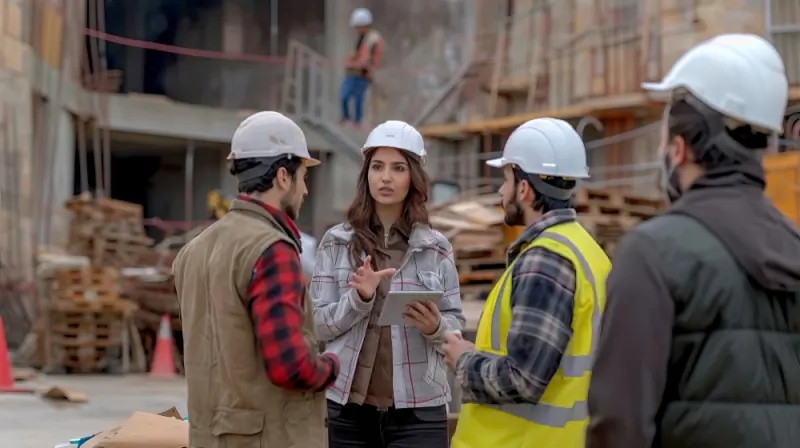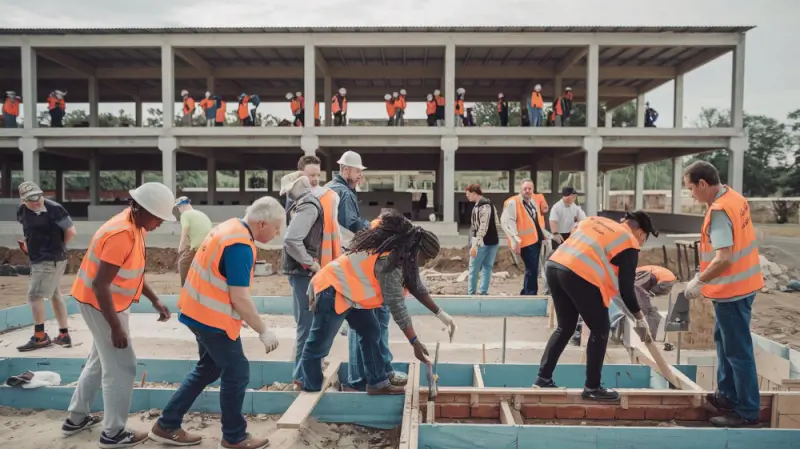America's construction industry is exploding. With 1.1 million new homes expected in 2025 and infrastructure projects popping up coast to coast, this isn't just growth—it's a full-blown construction boom. But here's the catch: the industry needs 439,000 new workers just to keep up with demand, and skilled labor is harder to find than ever.
What's Fueling the Construction Boom Right Now?
The current construction boom isn't happening by accident. Multiple factors are converging to create unprecedented demand across the industry.
Government spending is driving massive infrastructure projects. Public sector construction bids jumped 3.4% compared to last year, with military projects expected to surge 56% in 2025. Roads, bridges, and public buildings are getting the green light across America, creating steady work for contractors nationwide.
Data centers and tech facilities are reshaping the landscape. AI and cloud computing are eating up electricity like never before. Data center demand is projected to triple from 25 gigawatts in 2024 to 80 gigawatts by 2030. These massive facilities need specialized construction crews, electricians, and HVAC technicians—and they need them yesterday.
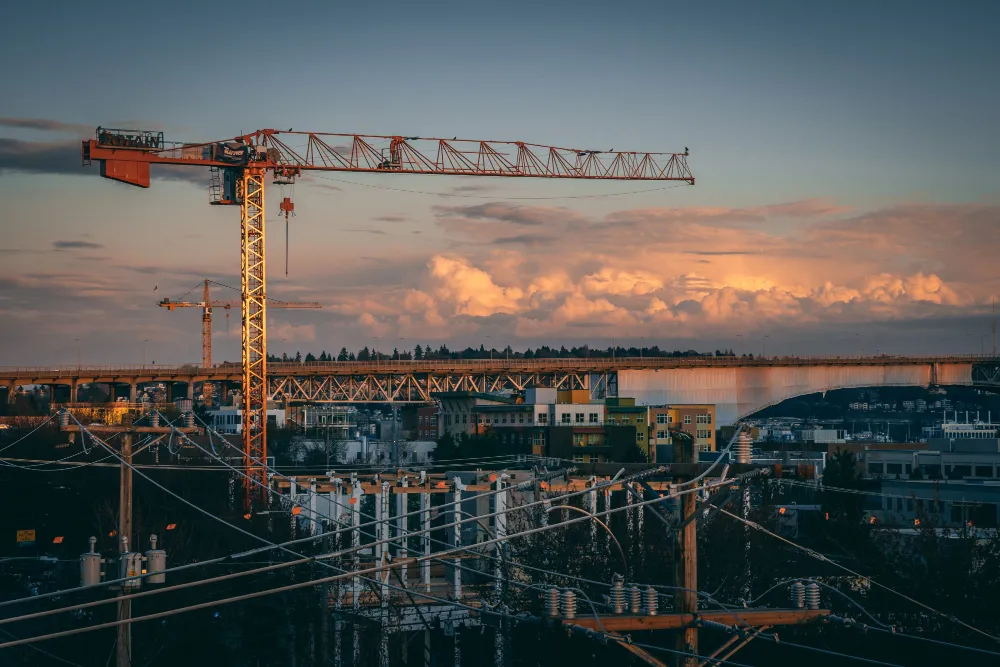
Residential construction is bouncing back strong. Single-family housing starts are predicted to rise 13.1% this year. After two brutal years of declining activity, homebuilders are ramping up production to tackle America's housing shortage. Multifamily construction is also rebounding with 9.5% growth expected as developers capitalize on easing interest rates.
The construction boom extends beyond traditional building. Renewable energy infrastructure is exploding, with solar and wind capacity projected to grow 141.8% from 2023 to 2033. Manufacturing facilities, particularly for semiconductors and electronics, are seeing record investment thanks to the CHIPS Act and reshoring trends.
The Massive Labor Shortage Problem Nobody's Solving
Here's the ugly truth about the construction boom: we don't have enough hands to build what America needs. The Associated Builders and Contractors estimates the industry needs 439,000 net new workers in 2025 alone. Some studies put that number even higher at 723,000 annually.
Experienced workers are aging out fast. About 41% of the current construction workforce will retire by 2031. These aren't entry-level positions we're losing—they're master electricians, veteran plumbers, and skilled equipment operators with decades of knowledge walking out the door.
Young workers aren't filling the gap. While 61.4% of high school graduates head to college, construction education programs struggle for attention. The industry has an image problem, and it's costing us big time. Gen Z workers want careers with clear paths and modern work environments, but construction hasn't done enough to show them what's possible.
The impact hits every project. According to recent surveys, 54% of contractors report project delays specifically because of workforce shortages. Another 45% face delays from labor challenges alone. This isn't about being picky—it's about literally not having enough qualified workers to start jobs on time.
Immigration policy changes are making things worse. Construction depends heavily on foreign-born workers, and tighter restrictions are shrinking the available labor pool right when demand is peaking. Border crackdowns and deportation concerns are creating uncertainty for workers and employers alike.
How Technology Is Changing Construction Hiring
Smart contractors aren't just waiting around for workers to show up. They're using technology to work smarter and hire better.
AI-powered tools are revolutionizing project management. From scheduling software that predicts delays before they happen to automated progress tracking via drones, technology is helping lean teams do more. AI is cutting project delays by 10-20% while improving safety through predictive analytics.
Digital recruitment is becoming non-negotiable. About 57% of firms have added online strategies to recruit younger workers. The days of posting a help wanted sign at the lumberyard are over. Modern hiring happens on Indeed, LinkedIn, and specialized construction job boards.
AI resume builders are leveling the playing field. Workers can now create professional resumes in minutes, highlighting their skills and certifications in ways that catch employers' attention. Tools like FlexCrew USA's AI resume builder help both experienced tradespeople and newcomers present themselves effectively, making it easier to match qualified workers with urgent opportunities.
Prefabrication and modular construction are also reducing on-site labor needs. By completing 60-90% of construction inside controlled factory environments, companies are working around labor shortages while improving quality and speed.
Construction Sectors Seeing the Biggest Growth
Not all construction is created equal during this boom. Some sectors are absolutely on fire while others are struggling to maintain momentum.
Data centers are the undisputed winner. Tech giants like OpenAI, Meta, and Alphabet are spending hundreds of billions on AI infrastructure. These projects require massive teams of electricians, specialized HVAC crews, and construction workers who can handle complex technical specifications.
Military and government projects are surging. With a projected 56% increase in military construction spending, defense contractors and government builders are scrambling for qualified workers. These projects offer stable, long-term work with competitive pay.
Hotel and retail construction is bouncing back. After struggling in 2024, hotels are seeing a 28% projected increase in construction projects. Retail is up 25% as e-commerce companies build fulfillment centers and traditional retailers renovate to compete. These projects need general laborers, carpenters, electricians, and finishing crews.
Renewable energy infrastructure dominates the future. Solar photovoltaic installers and wind turbine service technicians are among the fastest-growing construction-related occupations. This sector offers long-term career opportunities as America races toward clean energy goals.
Manufacturing construction, especially for semiconductors and advanced electronics, continues strong despite some 2024 slowdowns. The long-term pipeline remains robust as companies bring production back to American soil.
Why Most Companies Are Losing the Talent War
If you're struggling to find workers during this construction boom, you're not alone—but you might be making critical mistakes.
Slow hiring processes kill opportunities. When a skilled electrician applies for a position, they're probably talking to three other companies. The contractor who responds first and moves fastest usually wins. Manual hiring processes and weeks-long background checks mean losing top talent to competitors.
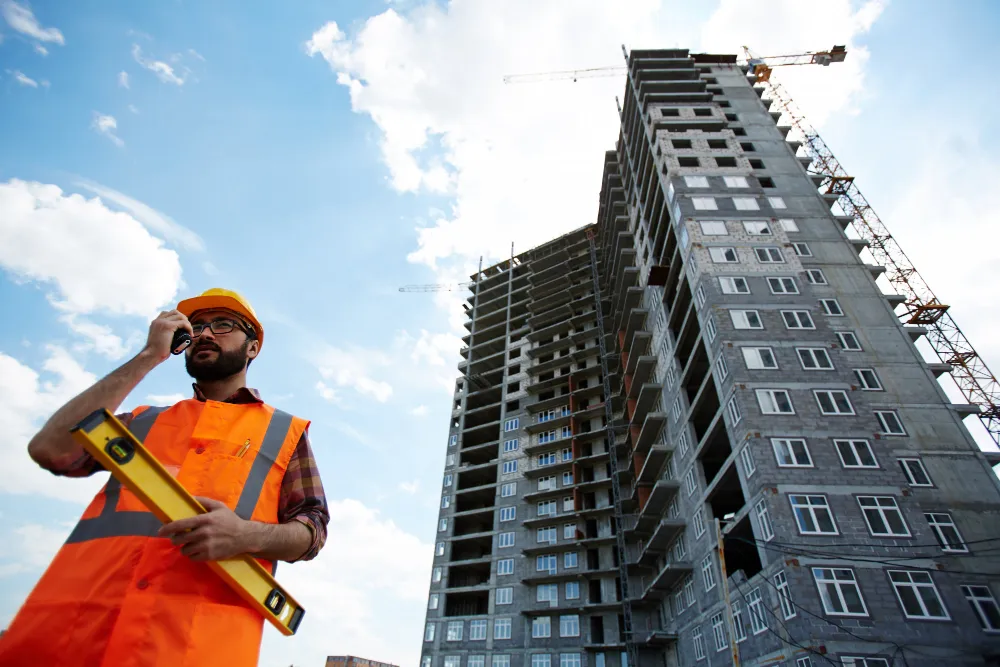
Poor compensation packages don't cut it anymore. With 52% of employers planning to increase wage shares by 2030, companies that aren't keeping pace are getting left behind. But it's not just about hourly rates—benefits, flexibility, and career development matter more than ever to skilled workers.
Lack of technology adoption signals you're behind. Workers, especially younger ones, notice when companies are using outdated systems. If your competitors are offering digital time tracking, mobile communication, and modern safety equipment while you're stuck with paper timesheets and flip phones, guess where the talent goes?
No clear career path means high turnover. Workers don't want dead-end jobs. Companies that invest in training, offer advancement opportunities, and create clear career ladders retain employees longer and attract better candidates initially.
The reality is harsh: during a construction boom, workers have options. Companies that treat hiring like a transaction instead of a relationship will continuously scramble for workers while their competitors build strong, loyal teams.
Smart Solutions for Construction Workforce Challenges
The contractors thriving during this construction boom aren't necessarily bigger or better funded. They're smarter about how they find, hire, and keep workers.
Streamline your hiring with specialized workforce solutions. Platforms like FlexCrew USA connect construction companieswith qualified workers fast. No more posting jobs and hoping someone responds—modern workforce solutions actively match your needs with available talent in real time.
Leverage AI for smarter candidate matching. FlexCrew USA's AI resume builder helps workers showcase their skills effectively, making your screening process faster and more accurate. You see qualified candidates sooner, and workers present themselves professionally without spending hours formatting resumes.
Build relationships with staffing partners. Having a reliable staffing partner means you can scale up or down based on project needs without maintaining a bloated permanent roster. This flexibility is crucial during boom periods when project timing is unpredictable.
Invest in quick onboarding and certification verification. The faster you can get a qualified worker on site, the sooner you're making money. Digital onboarding, instant background checks, and streamlined safety training mean less downtime between hire and productivity.
Create a pipeline, not just a job posting. The best companies aren't just hiring for today's needs—they're building relationships with workers for tomorrow's projects. Staying in touch with quality contractors and laborers between gigs means you have a ready list when the next big project kicks off.
Focus on retention too. Every worker you keep is one you don't have to find and train. Competitive pay, respect on the job site, and opportunities for skill development pay dividends through reduced turnover.
The Future of Construction Work: What's Coming
The construction boom of 2025 is just the beginning. Looking ahead, the industry will continue evolving in ways that reshape how we work.
Automation will handle repetitive tasks. Robots and autonomous machines are moving from concept to reality on job sites. They'll handle labor-intensive work like drywall installation and site surveying, freeing skilled workers for complex tasks that require human judgment.
Hybrid and remote work are becoming normal. Even in construction, remote work is happening. About 70% of construction teams report that virtual meetings and digital collaboration save time and money. Project management, estimating, and client communication increasingly happen from home offices.
Green building expertise becomes essential. As sustainability requirements tighten, workers with green construction skills and LEED certification will command premium rates. Energy-efficient building practices are shifting from nice-to-have to must-have across the industry.
Data and analytics skills matter more.
Construction is becoming data-heavy. Workers who can interpret digital twins, use BIM software, and understand predictive analytics will have career advantages over those who resist technology.
The construction boom will eventually normalize, but the workforce transformation is permanent. Companies that adapt now will dominate for decades. Those that resist change will struggle even when demand moderates.
Take Action: Win the Competition for Construction Talent
The 2025 construction boom creates massive opportunity—but only for companies that can actually get workers on site. Every day without qualified crews is money left on the table and projects falling behind schedule.
Start by evaluating your current hiring process honestly. How long from application to first day? How many qualified candidates ghost you before starting? How often do you turn down projects because you can't staff them? These answers tell you where to focus.
Partner with workforce solutions that understand construction. FlexCrew USA specializes in connecting construction companies with qualified workers fast. Whether you need a full crew for a six-month project or skilled specialists for a week, having the right partner makes all the difference.
Use every advantage available. From AI-powered resume builders to digital screening tools, modern workforce technology exists to solve exactly the problems you're facing. Companies that embrace these tools hire faster, retain longer, and outcompete businesses stuck in the past.
The construction boom won't wait for you to figure out staffing. Projects are breaking ground now, and the companies with crews win the work. Make workforce solutions a priority today, not an afterthought when you're already behind schedule.
Don't let the biggest construction boom in decades pass you by because you couldn't find workers. Get ahead of the competition by partnering with workforce solutions that understand construction's unique challenges and deliver qualified workers when and where you need them.
Frequently Asked Questions About the Construction Boom
Q: What is causing the construction boom in 2025?
A: Government infrastructure spending, massive data center construction for AI, residential housing demand, and renewable energy projects are driving the boom. Single-family starts are up 13.1%, and public construction bids increased 3.4%.
Q: How many construction workers does America need in 2025?
A: The industry needs 439,000 net new workers in 2025, with some studies suggesting up to 723,000 annually to meet demand across all construction sectors.
Q: Why can't construction companies find enough workers?
A: About 41% of workers will retire by 2031, fewer young people enter the trades, immigration restrictions limit the labor pool, and construction competes with other industries for skilled talent.
Q: What construction jobs are in highest demand right now?
A: Electricians, HVAC technicians, heavy equipment operators, carpenters, plumbers, and general laborers. Solar installers and wind turbine technicians are fastest-growing specialties.
Q: How can construction companies compete for workers during the boom?
A: Streamline hiring to move fast, offer competitive wages and benefits, embrace technology, provide career advancement paths, and partner with workforce solutions like FlexCrew USA.
Q: Will the construction boom continue beyond 2025?
A: Yes. Long-term drivers like data centers (tripling by 2030), renewable energy (141.8% growth through 2033), and housing shortages suggest sustained demand for years ahead.
Q: How is technology changing construction hiring?
A: AI scheduling tools, digital recruitment platforms, AI resume builders, automated background checks, and mobile apps for time tracking are revolutionizing how companies hire and manage workers.
Q: What states are seeing the biggest construction booms?
A: The Sunbelt (Texas, Florida, Arizona), Virginia for data centers, and states benefiting from the CHIPS Act like Ohio and New York. Metro areas include Phoenix, Austin, and Charlotte.
Q: How does FlexCrew USA's AI resume builder help construction workers?
A: It creates professional resumes in minutes, automatically formats work history, highlights skills and certifications, and helps workers present themselves competitively to employers.
Q: What's the long-term outlook for construction careers?
A: Strong prospects through 2030 with construction workers among fastest-growing jobs globally. Workers with green building expertise, digital skills, and emerging technology knowledge will command premium pay.

